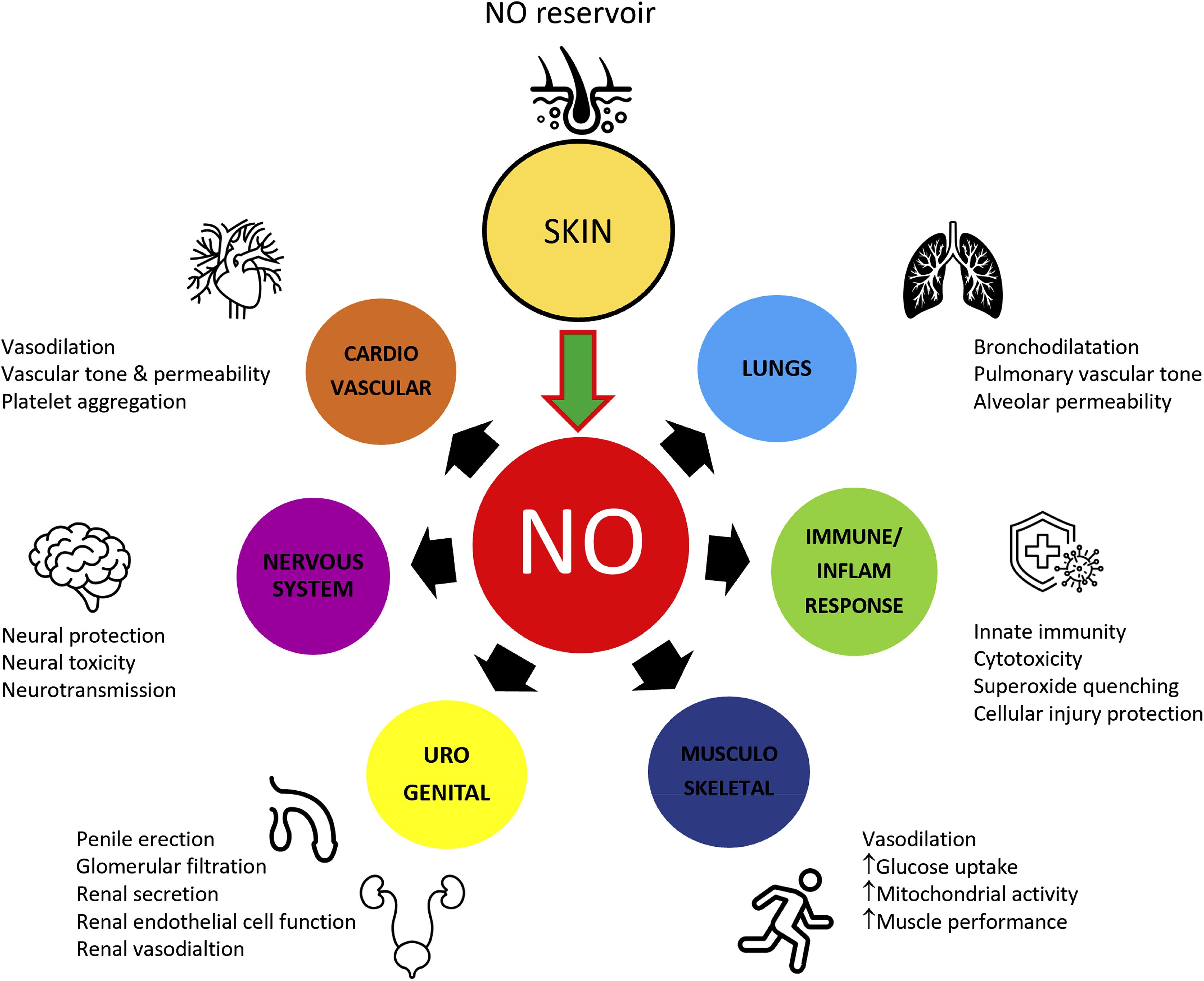Seasonal Variation In Sunlight Exposure, Nitric Oxide Metabolites, And Blood Pressure
Easton, Chris Medicine & Science in Sports & Exercise: July 2020 - Volume 52 - Issue 7S - p 893
A reduced exposure to ultraviolet (UV) radiation in winter can decrease 25-hydroxyvitamin D (25(OH)D) levels, increase cardiovascular risk factors, and inhibit athletic performance. Exposing skin to UV-A light in the laboratory has also been shown to release nitric oxide (NO) metabolites into the circulation; molecules known to regulate multiple cardiovascular and metabolic processes. However, it is presently unclear whether NO availability is influenced by the seasonal variation in UV exposure.
PURPOSE: To compare UV exposure, serum 25(OH)D, plasma nitrate and nitrite, and blood pressure between the summer and winter months.
METHODS: Thirty-four healthy adults (21 males) residing in Scotland (~55.8o N, 4.1o W) were monitored for 7 days in the summer (June - August) and winter (December - February) in a randomised order. Participants wore a personal UV monitor on the wrist throughout each monitoring phase before visiting the laboratory to provide a venous blood sample and to have blood pressure measured. Serum levels of 25(OH)D were measured using an enzyme-linked immunosorbent assay and plasma nitrate and nitrite analysed using gas-phase chemiluminescence.
RESULTS: Total UV-A exposure was higher in summer (17 ± 21 J.cm2) compared to winter (2.5 ± 3.0 J.cm2, P<0.001). Plasma nitrate did not differ between seasons (P=0.57) but nitrite (137 ± 31 Nutrimuscle) and serum 25(OH)D (22 ± 8 ng/ml) were lower (both P<0.001) in the winter compared to summer (200 ± 56 Nutrimuscle and 35 ± 13 ng/ml, respectively). Blood pressure was higher in winter (systolic 126 ± 13 mmHg; diastolic 76 ± 9 mmHg) than in summer (systolic 119 ± 11 mmHg; diastolic 67 ± 8 mmHg; both P<0.001). UV-A exposure was positively associated with plasma nitrite (R=0.41, P<0.01) and 25(OH)D (R=0.43, P<0.01). Plasma nitrite was negatively associated with systolic (R=−0.5, P<0.01) and diastolic blood pressure (R=−0.4, P<0.01).
CONCLUSIONS: In a similar fashion to 25(OH)D, circulating levels of plasma nitrite, a marker of NO bioavailability, appear to be influenced by seasonal variations in UV exposure. The negative association between nitrite and blood pressure suggest that a reduced level of NO may increase cardiovascular risk factors in the winter months.















